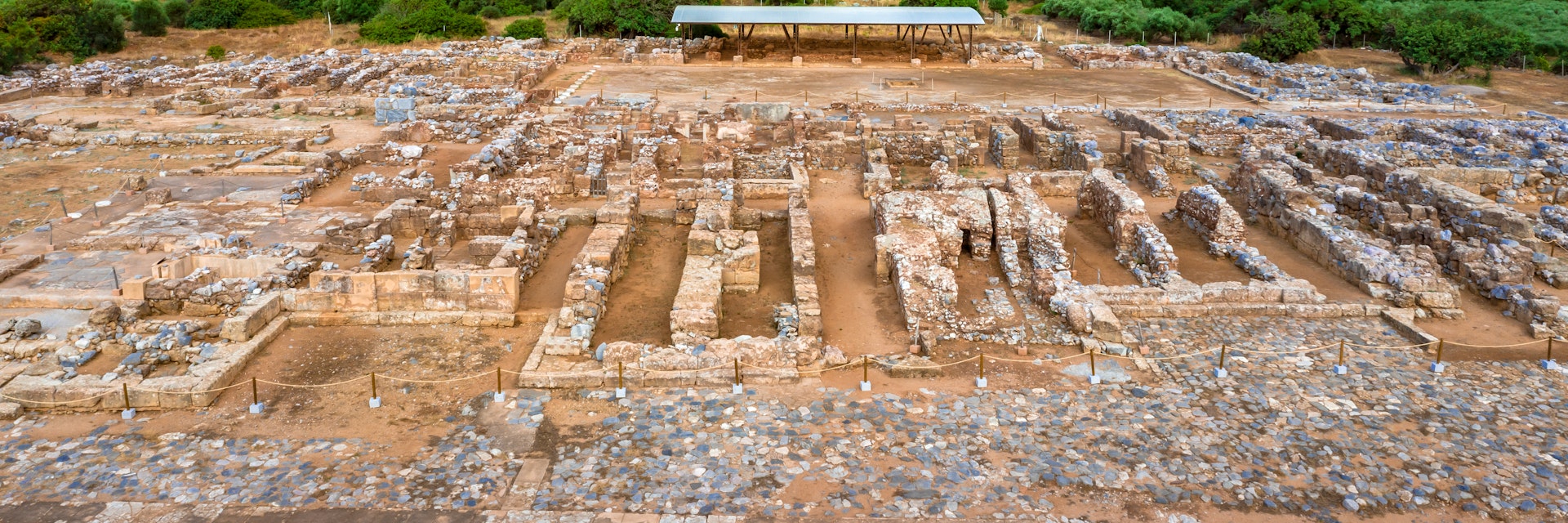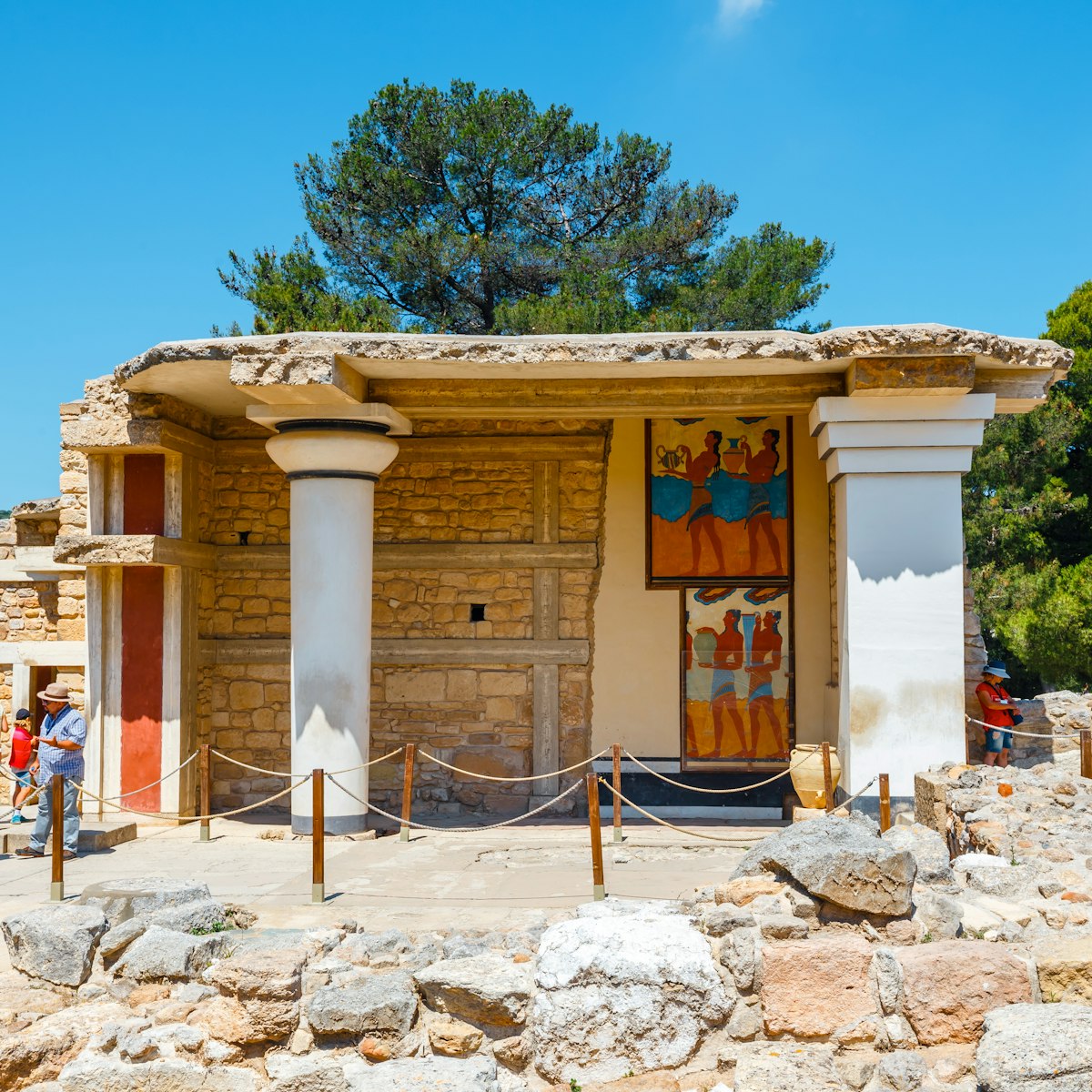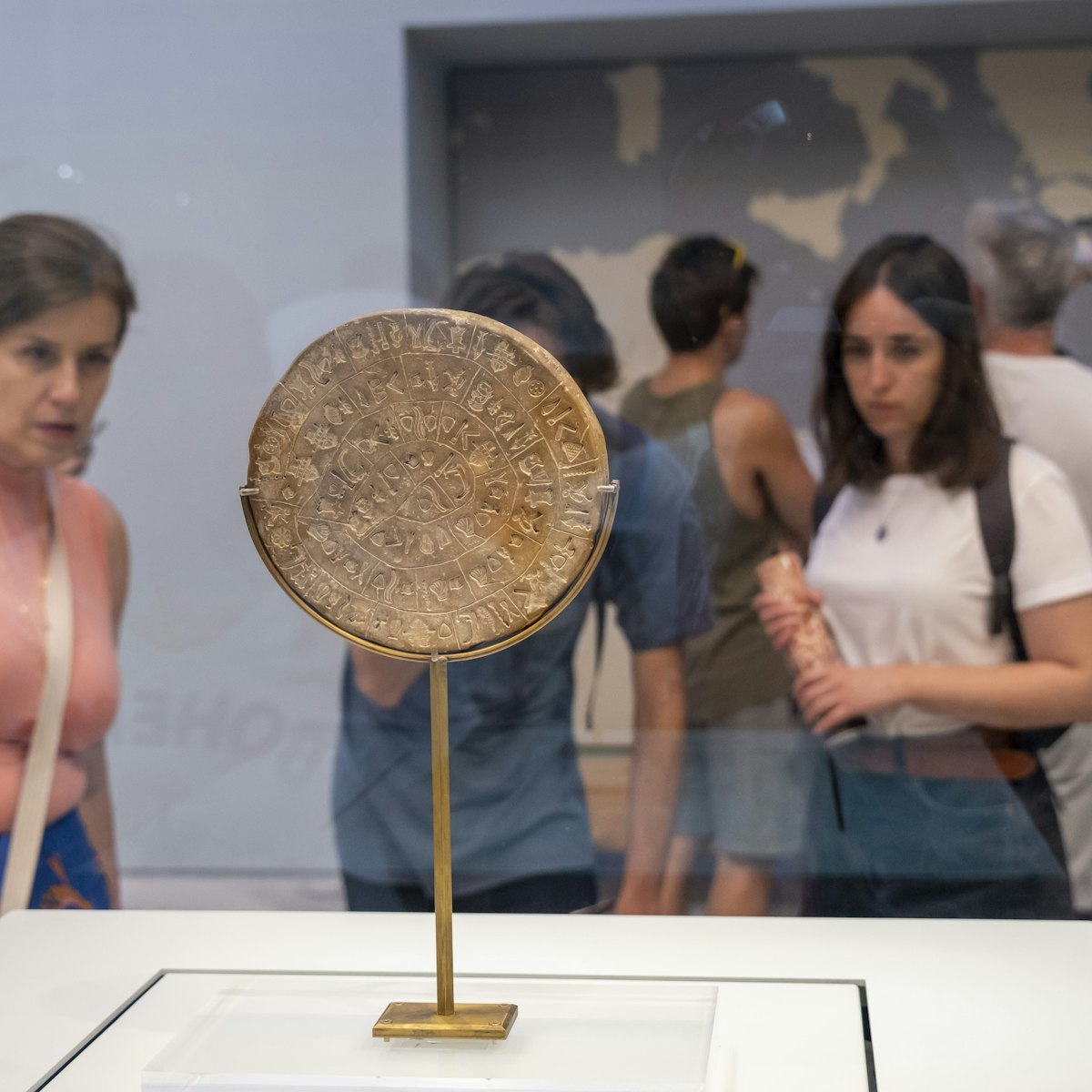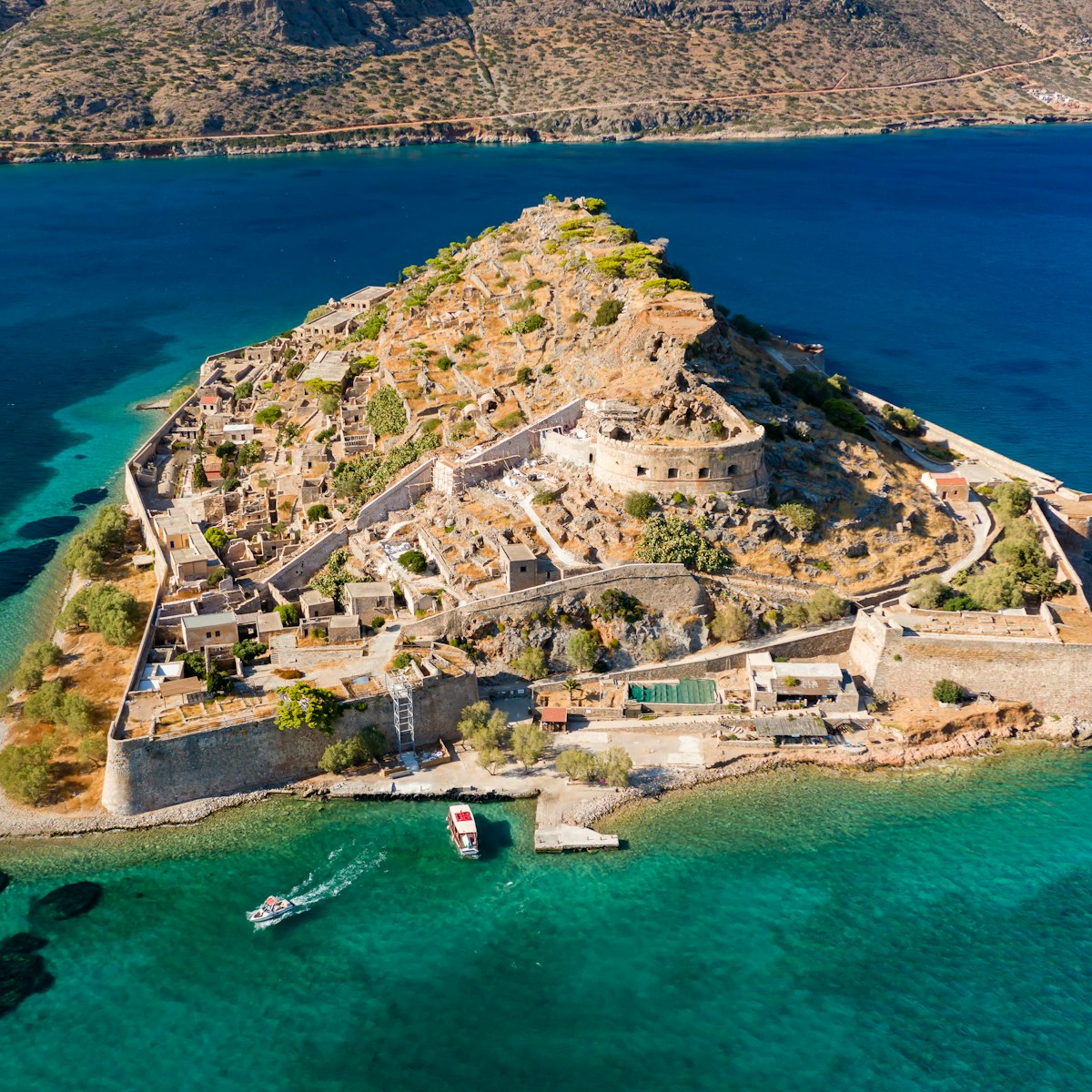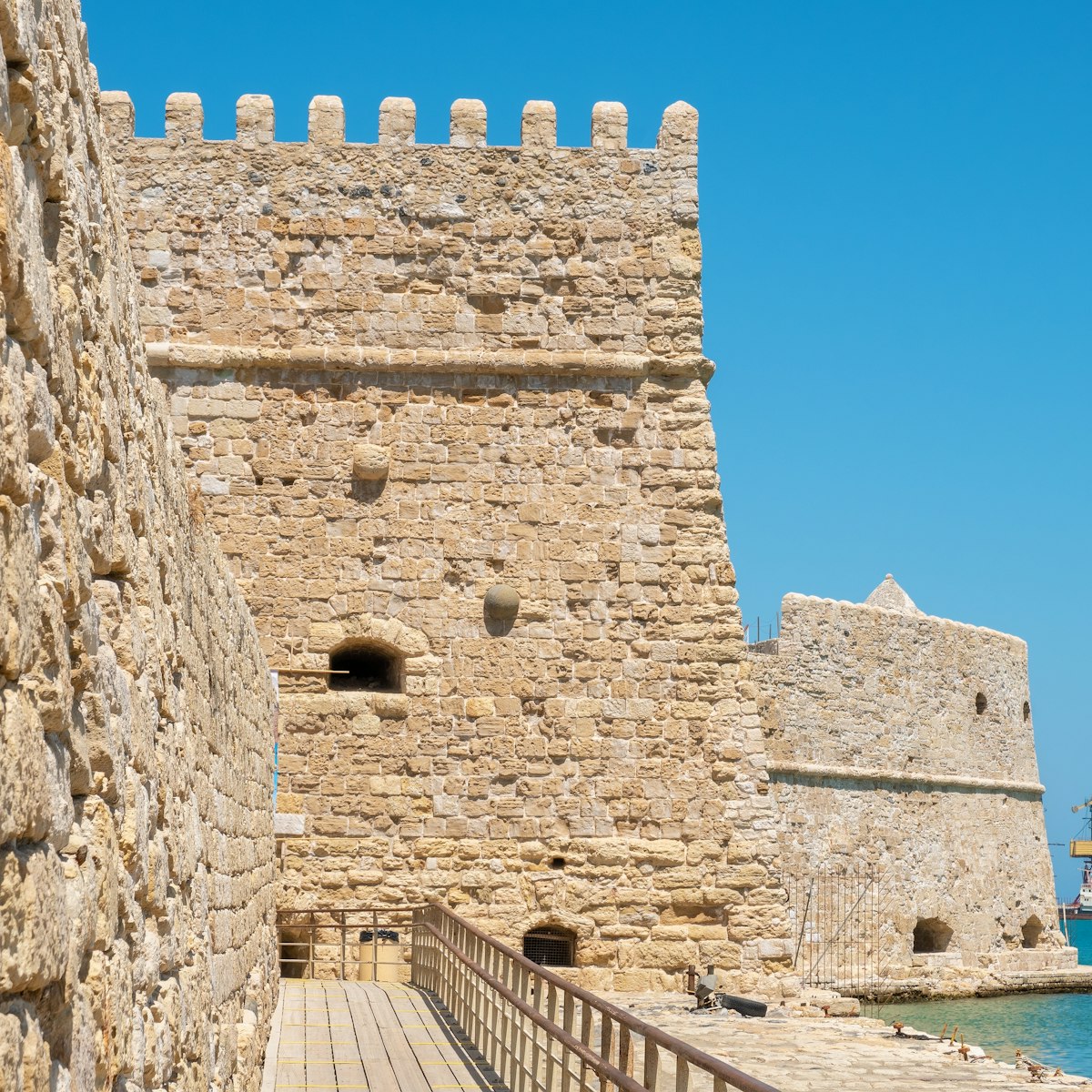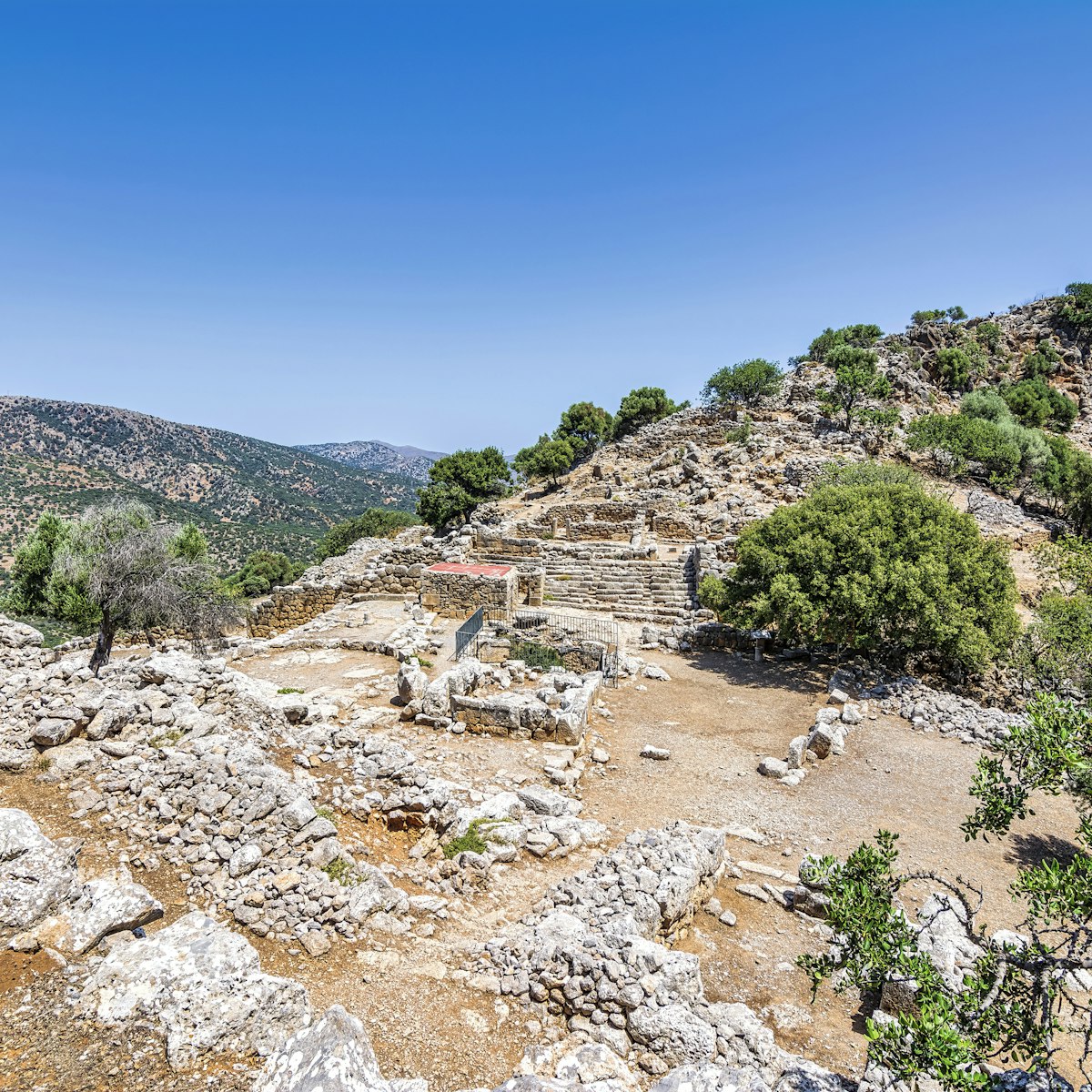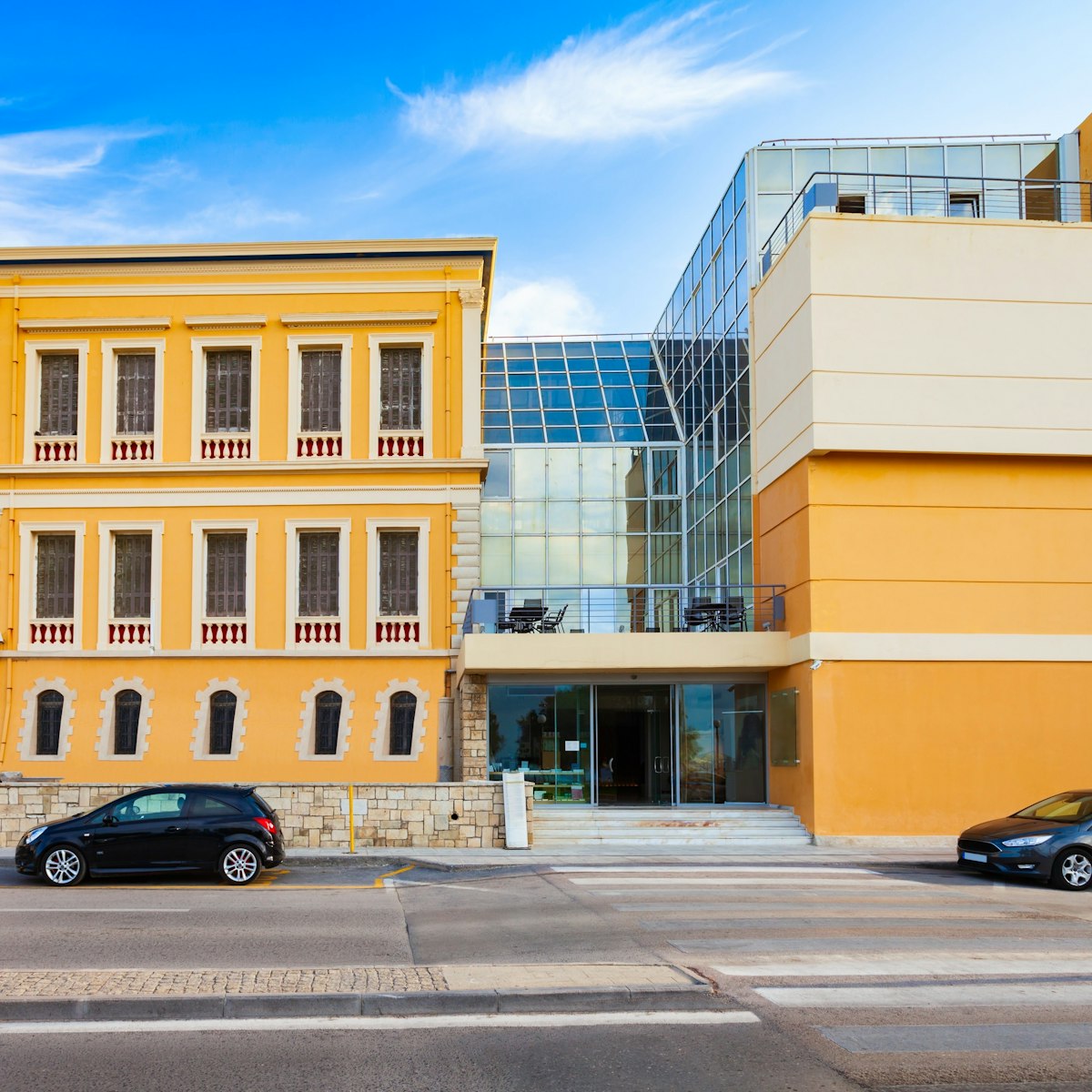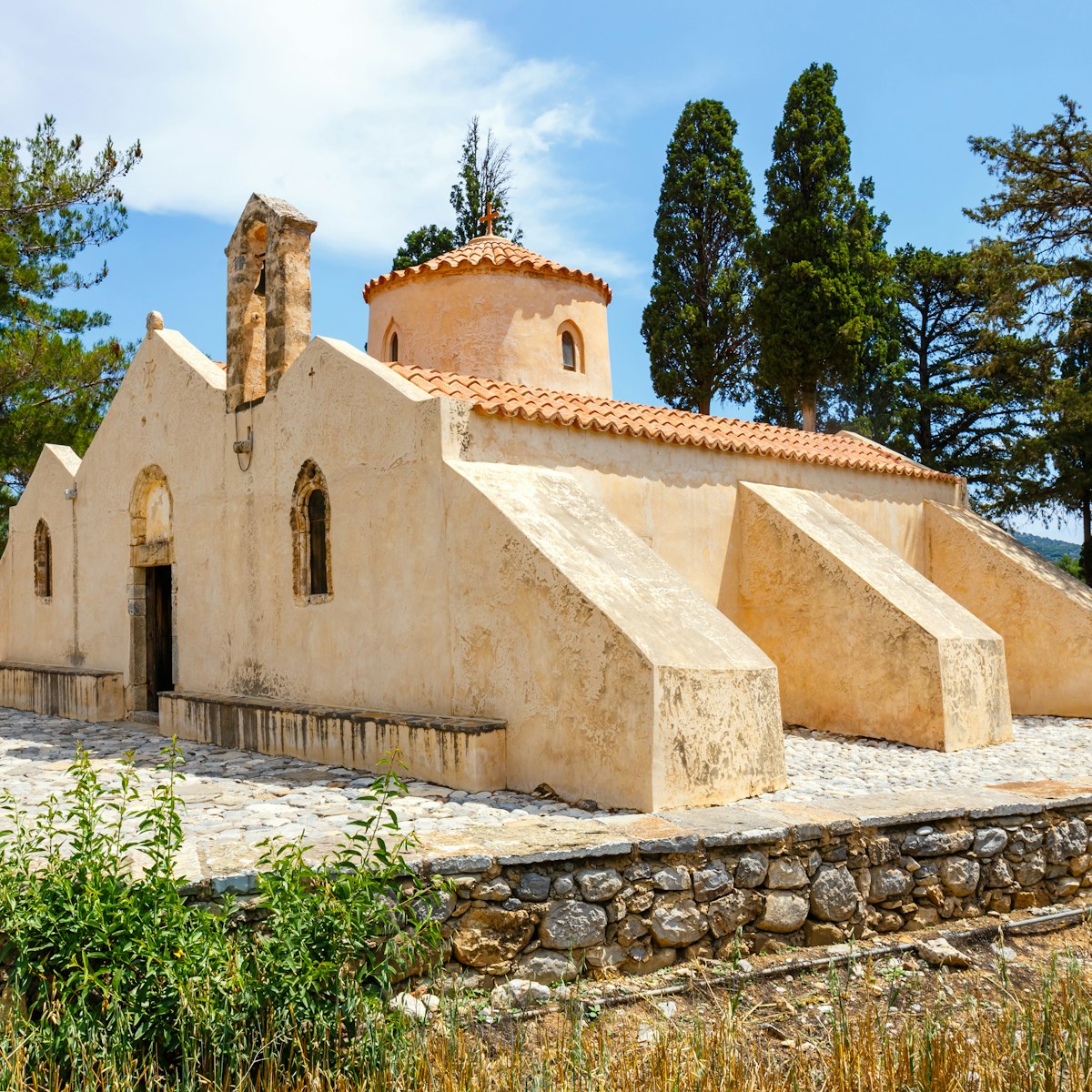The Palace of Malia, 3km east of Malia, was built at about the same time as the great Minoan palaces of Phaestos and Knossos. The First Palace dates back to around 1900 BC and was rebuilt after the earthquake of 1700 BC, only to be levelled again by another tremor around 1450 BC. Most of what you see today are the remains of the Second Palace, where many exquisite Minoan artefacts, including the famous gold bee pendant, were found.
Malia is a relatively easy site to comprehend thanks to a free map, labelling throughout and an exhibition hall where photographs and scale models of the ruined and reconstructed complex help you visualise the main palace and surrounding sites. There is no fixed route to follow and you're free to explore as you like. The following is merely a suggested approach.
Enter from the West Court, turn right and walk south along the grain silos, a series of storage rooms for eight kouloures (circular pits) that are believed to have stored grain. Continue past the silos and enter the palace’s Central Court, which was once framed by arcades. On your left, in the ground, is the Kernos Stone, a disc with 34 impressions around its edge that may have had a religious function.
Walk to the sunken altar pit in the centre of the courtyard and take in its impressive dimensions: 48m long and 22m wide. Beneath a canopy on your right are the east magazines, where liquids were stored in giant pithoi. The south wing contained apartments and a small shrine, while the north wing had workshops, storerooms and a ceremonial banquet hall. The most important rooms of the palace were in the west wing. The structure furthest to the north, the loggia, was linked to the court by four steps and probably used for ceremonial purposes. Next are the 11 remaining steps of the grand staircase, which may have led to a shrine. A bit set back, behind a stone-paved vestibule, two remaining stumps mark the location of the pillar crypt.
Buses from Iraklio stop at bus stop 36 on the main road, 250m from the site.
